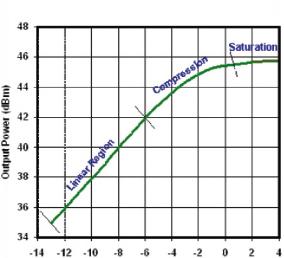 I find my self reading the VTC 2011 workshop program where there is a workshop on Cognitive radio and Cooperative strategies for POWER saving (C2POWER). The key question asked is if these techniques can make up for the additional power spent in signal processing to actually save energy. I think this a relevant problem – however, in my view this discussion clearly misses the main power saving potential: by making more spectrum available we can use less signal processing and less power hungry PHY-layers. Mainstream design in PHY-layer development has since the early 3G spectrum auctions being going down the path of maximizing spectrum efficiency and hasn’t looked back since then. It is clear that cranking out as many bps in a given small piece of spectrum by using high-order linear modulation is not the way to energy efficiency. In addition to extensive high-speed signal processing, the efficiency of power amplifiers is low – in the order of 10% or less. Cooperative schemes are not likely to require less linearity from PA:s.
I find my self reading the VTC 2011 workshop program where there is a workshop on Cognitive radio and Cooperative strategies for POWER saving (C2POWER). The key question asked is if these techniques can make up for the additional power spent in signal processing to actually save energy. I think this a relevant problem – however, in my view this discussion clearly misses the main power saving potential: by making more spectrum available we can use less signal processing and less power hungry PHY-layers. Mainstream design in PHY-layer development has since the early 3G spectrum auctions being going down the path of maximizing spectrum efficiency and hasn’t looked back since then. It is clear that cranking out as many bps in a given small piece of spectrum by using high-order linear modulation is not the way to energy efficiency. In addition to extensive high-speed signal processing, the efficiency of power amplifiers is low – in the order of 10% or less. Cooperative schemes are not likely to require less linearity from PA:s.
A more radical approach is if we instead spend our processing capabilities on dynamic spectrum access to free more spectrum, we could sacrifice spectrum efficiency and revert to low-order constant envelope schemes where power amplifiers are very efficient. Potential energy savings in this approachs should be an order of magnitude, not just a few dB:s.


You seem to have left out an importent part of the puzzle here: Amplifier linearisation.
There are several schemes available and currently evolving that will make high efficiency amplifier topologies more linear. For mobile equipment power consumption has been a key driver for decades, and the same liearisation technologies with adaptions can be applied for the stationary ones. With 4G terminals and basestations linearisation will be more neccessary than ever.
Absolutely, there has been substantial progress in linearization over the last 10-15 years – but the demands also increase all the time as we go to higher and higher order modulation. Just look at the ratios between the output RF power and total power consumption of commercial 3G/LTE equipment. 10% is a good figure here. I agree its absolutely necessary for the systems we are stuck with now, my concern was more about where to go beyond “4G”.